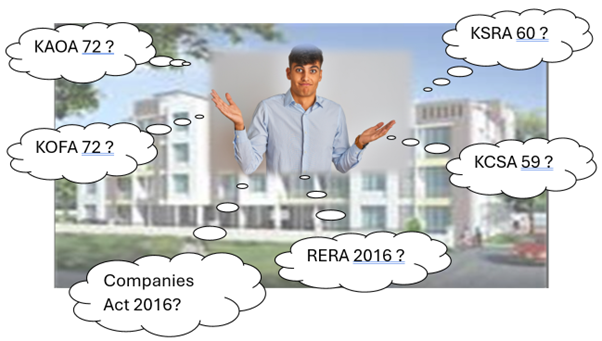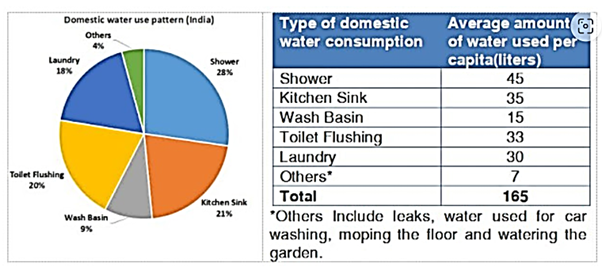Can General Body Meetings (GBMs) be replaced by General Body Digital Interactions (GBDIs)?
- Kevin Desouza
- Apr 16, 2024
- 3 min read
Updated: Apr 19, 2024
All cooperative housing societies and apartment associations (henceforth referred as societies) are required to hold Annual General Body meetings (AGBMs) or simply Annual General meetings (AGMs). These are meetings where all members ( the general body) are invited to attend and participate in a series of agenda activities. Societies have managing boards or committees which take routine decisions which are restricted to certain financial and legal limits. So any decision beyond these, needs the approval of the general body. The purpose of these GBMs can therefore be summarised as: To enable the general body to participate in monitoring the functioning of the society/association, by sharing and analysing relevant issues and taking major decisions ( with major expenditure or implications) on future courses of action.
Societies have required that members must physically attend and cast their votes for decisions. Approving a proposed decision is facilitated through a “for” or “against” motion through a “show of hands” where members hands, which are raised in approval, are counted and compared against the total number present. If the number construes a majority, the proposal is deemed to be approved.
AGMs follow a typical process as depicted by the schematic below. It is cyclical because every meeting takes on from where the earlier meeting left off.
The typical GBM cycle
During the Covid pandemic period, governments relaxed the rules for companies ( which have similar AGMs) allowing Video Conferencing (VC) or Other Audio Visual Means (OAVM) with provisions for e-voting. This provision has been extended post the pandemic, and now digital/electronic participation (which is found to significantly increase participation and reduce costs) is being increasingly accepted across the world and in India. (See note 1)
While State laws which govern most Indian societies, have not specifically included the provision of e-voting and virtual meetings, the Multi-state Cooperative Society Act was amended in 2023 by Parliament to enable a digital eco-system for more transparency and efficiency. A firm providing e-voting service also states that the model bye-laws in most states do not specify the method and hence both paper and online ones are legally permitted. In their article titled "Housing Society Voting Solutions and Processes” they also state that Maharashtra and West Bengal have explicitly advised e-voting to enable non-residents to participate in decision-making. (See note 2)
Conducting of VCs however, can be technically difficult and expensive. In practice, there is a mix of members who can and prefer to attend physically and those who cannot. Hence, a hybrid form is used where cameras, projectors and online uploading equipment and software are needed. This can be well beyond the grasp of small housing societies which are cash strapped and lack technical expertise. Also, VCs don’t enable free querying and like physical forums, are time bound thus restricting the members from taking their time on analysing and consulting others on the issues at hand.
But is there an even simpler way using free email and polling features such as Google forms? Let’s analyse this through each step of the AGM proceedings, in the comparative table below:
GBM activity | The current manual process | A possible online process |
Issue of notice for the meeting with financial statement and asking for agenda points/proposals | By letters or emails to all members. Confirmation of receipt of letters (especially if they are registered) is possible but not fool-proof, especially of members are not present at their addresses. | By emails to all members who can acknowledge receipt by clicking an embedded button. This gets recorded in a database and those members who have not acknowledged can be requested to do so through alternate means. Thus ensuring a full outreach. |
Members assemble and a quorum is established | Members spend to travel and reach the meeting hall which may have to be hired. In case a quorum is not available, they wait or the meeting may have to be adjourned to another day. | Members who acknowledge are included in an email group thus bringing them together online. The numbers automatically confirm whether a quorum is achieved. The President issues his introductory message by email to all and declares the meeting open. |
Minutes of last meeting are read out and approved | Members need to listen carefully and recall if any issues have been left out or wrongly worded. This can be problematic if time is limited and audio issues exist. | Minutes are emailed to all members within a week of the meeting. Hence, members have sufficient time to point out deviations/inaccuracies much before the next meeting is started. New members can be emailed the minutes along with the notice for the meeting. |
Financial statement is read out, discussed and approved | Hard copies of the annual financial statement are handed over to members who then have limited time to study it and point out issues. | The financial statement is emailed along with the notice and members have sufficient time to examine it before the meeting. The President asks for observations by email. These are collated and again shared with all alongwith explanations and corrections, if needed. Approval is then asked for by email with a digital button which members press. A majority vote means approval. |
Progress on earlier decisions and ongoing projects | Concerned directors/ managers present these to the gathering and queries/ suggestions are noted down. Sometimes these get distorted in the process. | These are addressed in a similar manner as above : By Emailing the progress, Collating queries, Sharing them with all and obtaining Approvals through votes ( ECSA) |
New agenda points/proposals are discussed and approvals obtained through voting | Members who attend hear these for the first time and have limited time to analyse and provide views. Voting is by a show of hands, which can be affected by unsure members who may have insufficient information to decide. | These are emailed to all one by one and ECSA followed with sufficient time for members to cross check, analyse, discuss with others and then vote. |
Election results are shared and the new committee approved. The meeting is formally closed | These are announced to the gathering and committee members brought on stage for members to acknowledge and for them to confirm their commitments. The closure of the meeting is announced | Results and list of elected members are shared with all. Elected members may post a short message each affirming their abilities and commitment to their responsibilities. The closure of the meeting is emailed. |
Minutes of the meeting are prepared and circulated to all members | This is done by mailing hard copies or emailing. No queries are admitted till next meeting is opened. | The group emails automatically serve as a record of the proceedings, with number of votes and approvals. Hence, only a summary could be made and emailed to all. This could again be ECSA-d while members memories are still fresh. Thus obviating the need for approval in the next meeting which will be after year. |
So, is there any part of the manual GBM process which is not possible through the General Body Digital Interaction (GBDI) described above? Technically, there don't appear to be any. But are there cultural or extraneous issues such as members not being comfortable with text or emailing? This could be overcome by providing assistance to them. What about members wanting to see speakers in person to assure themselves? Members wanting to meet others in informal ways to build a rapport?
Yes, the comfort and depth of interaction in physical meetings helps. Members feel more bonded to each other and the group. They are motivated by the speakers and the emotions of the moment. And the sumptuous lunch or high tea in the end provides for a good feeling of togetherness that cannot be provided by digital communication.
So let’s compare the pros and cons in implementation:
Aspect | GBMs | GBDIs |
Attendance and process time | Full time attendance by members over a few hours to a day. If the quorum is not available, members may inconvenienced to gather again | Part-time at convenience, spread over one to two weeks. No repetitive action is needed to build a quorum, since members in the email group remain. |
Accessibility | Members may be constrained by work, travel, personal engagements etc | Members can attend from anywhere in the world, irrespective of time zones, work and personal commitments |
Cost | Members need to travel and a hall, seating, refreshments etc need to be catered for | Emailing and data requirements are practically free. Professional e-voting may need to be hired at a small price. |
Technical issues | Sound and presentation systems need professionals | Some less IT literate members may need assistance in emailing |
Confidentiality | Financial statements and strategy documents can be shared sparingly and collected back. However, members may still share them afterwards. | Members may forward documents to others. But as far as housing societies are concerned, sharing them holds no drawbacks or threats. |
Member comfort, togetherness, morale, motivation | Manual interactions help here. But, conversely, physical meetings are also prone to herd mentalities, shouting others down, bullying, insulting actions and group think. If unruly, meetings need to be adjourned and re-convened, inconveniencing the members. | More controlled but less physical togetherness. This can be mitigated by holding an online video meeting on platforms such as Zoom which are not expensive. Unruly behaviour can be avoided since members cannot raise their voices to shout down others and push their views. |
From the above analysis, the efficacy and benefits of the digital process clearly overshadow the manual one. The one drawback of less physical togetherness can be mitigated by holding online video meetings ( not VCs) through platforms such as Zoom or Teams for the commencement and the vote of thanks at the end.
But what if the State laws or the society’s Bye-laws stipulate a physical meeting with physical casting of votes? Will the digital process be upheld? It’s a grey area. So until they are amended (as they will in time), why not use the digital process and follow it up with a manual one which simply replicates it ?
Notes
[i] Sec 108 and 109 of the Indian Companies Act 2013 have been updated to include electronic voting. Generative AI searches state gained prominence of Virtual meetings with the advantages of cost savings and transparency.





Seems plausible but will residents take to it? I think they would prefer following the existing system of physical meetings